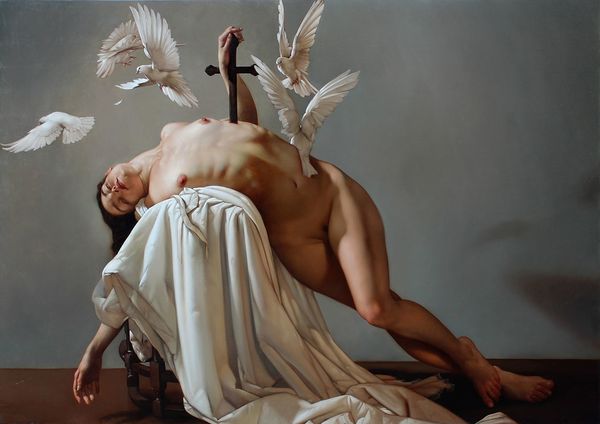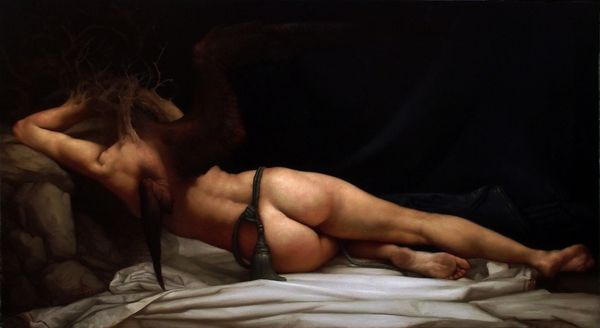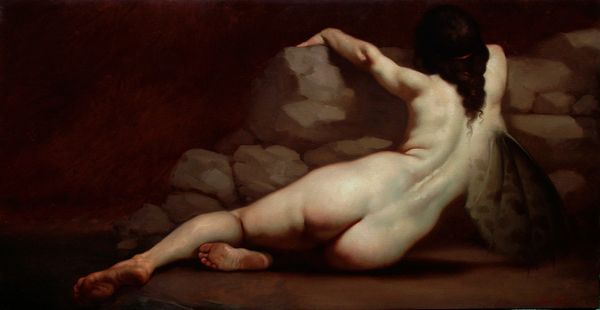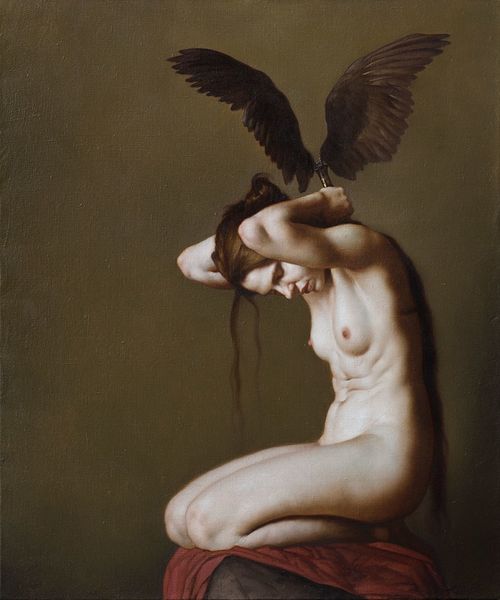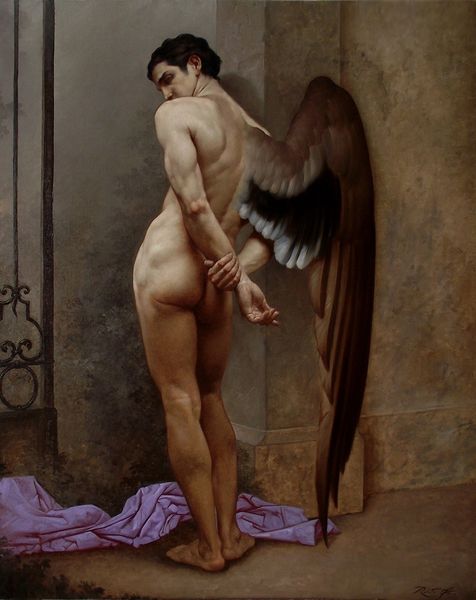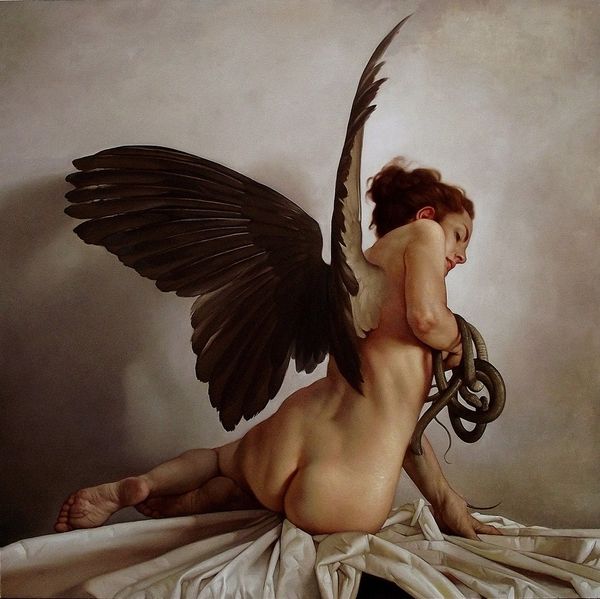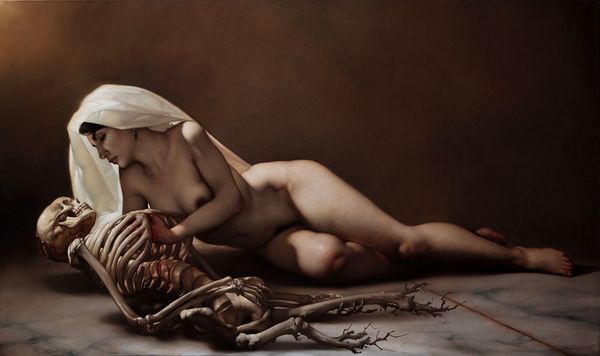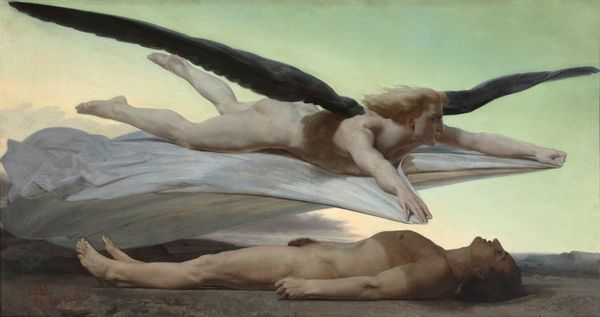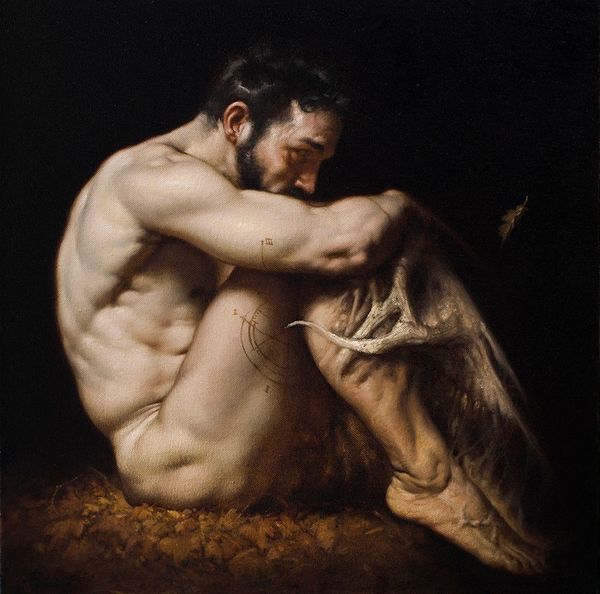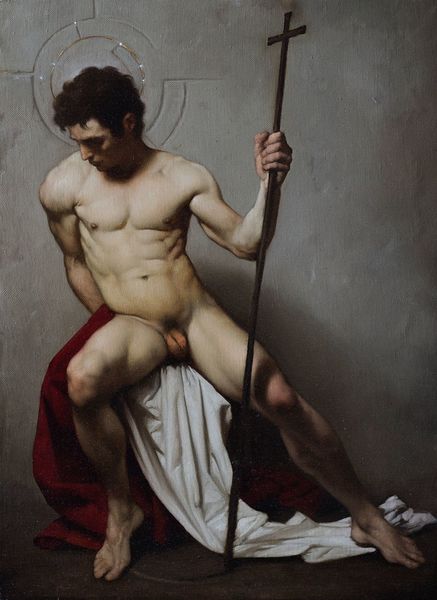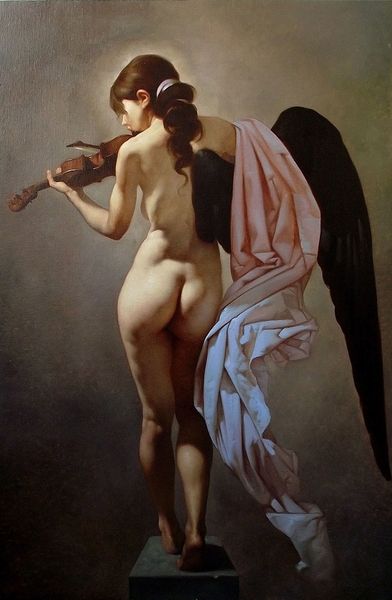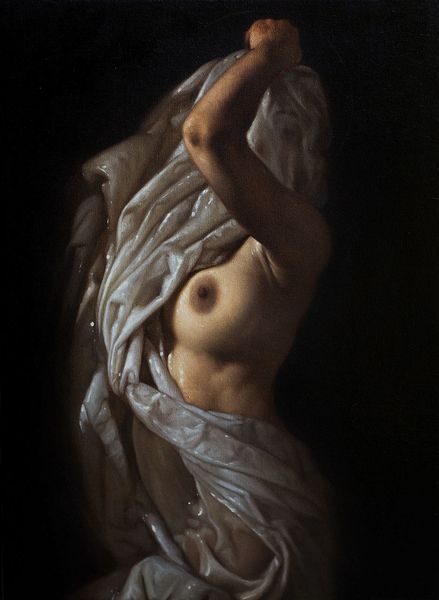
Dimensions: 75 x 150 cm
Copyright: Roberto Ferri,Fair Use
Curator: What strikes me first is the absolute agony etched across this angel’s posture. It’s utterly arresting. Editor: I concur. We’re looking at Roberto Ferri's "Amore Piange Sulla Tomba Di Psiche", crafted in 2013. It’s an oil painting, heavily influenced by Romanticism and Academic art. Ferri masterfully blends classical techniques with a strikingly emotional, modern sensibility. Curator: Yes, he truly has! It reminds me of a Caravaggio with wings! I love the tenebrism—the dramatic spotlighting—the way it accentuates every contour of the figure's distress. You can almost feel his sorrow. Is this from the Greek myth? Editor: Precisely. The painting illustrates a moment of profound grief in the tale of Cupid, or Amore, mourning Psyche's supposed death. This image engages with a long art historical tradition, inviting viewers to contemplate love, loss, and mortality through a queer lens as well. Cupid here looks masculine and is overtly eroticized as well. Curator: Queer lens indeed! The softness of his skin juxtaposed against the angular sharpness of his wings…there’s a vulnerability laid bare, isn't there? And the way his downward gaze avoids meeting ours is heartrending. I'm almost overwhelmed. Editor: Absolutely. Furthermore, I’d highlight the positioning on a tomb. Consider the symbolism there. Who gets to grieve, whose grief matters, and who has historically been deprived of that very human act? Curator: The textures, too, add so much depth. From the smoothness of skin to the detailed texture of those incredible wings – Ferri knows how to bring something alive. There's a sense of realism but it is all heightened by a kind of divine pathos. Editor: The artist undeniably prompts reflection upon both personal loss and broader societal structures, creating this tension between raw emotion and historical weight. The tomb’s unadorned simplicity draws stark contrast to the ornamental Romanticism. Curator: What a fascinating take! I shall think differently about such loss and the grief one holds close going forward now. Editor: Hopefully, this offers a framework to examine familiar imagery anew and challenge art's accepted narratives.
Comments
No comments
Be the first to comment and join the conversation on the ultimate creative platform.
